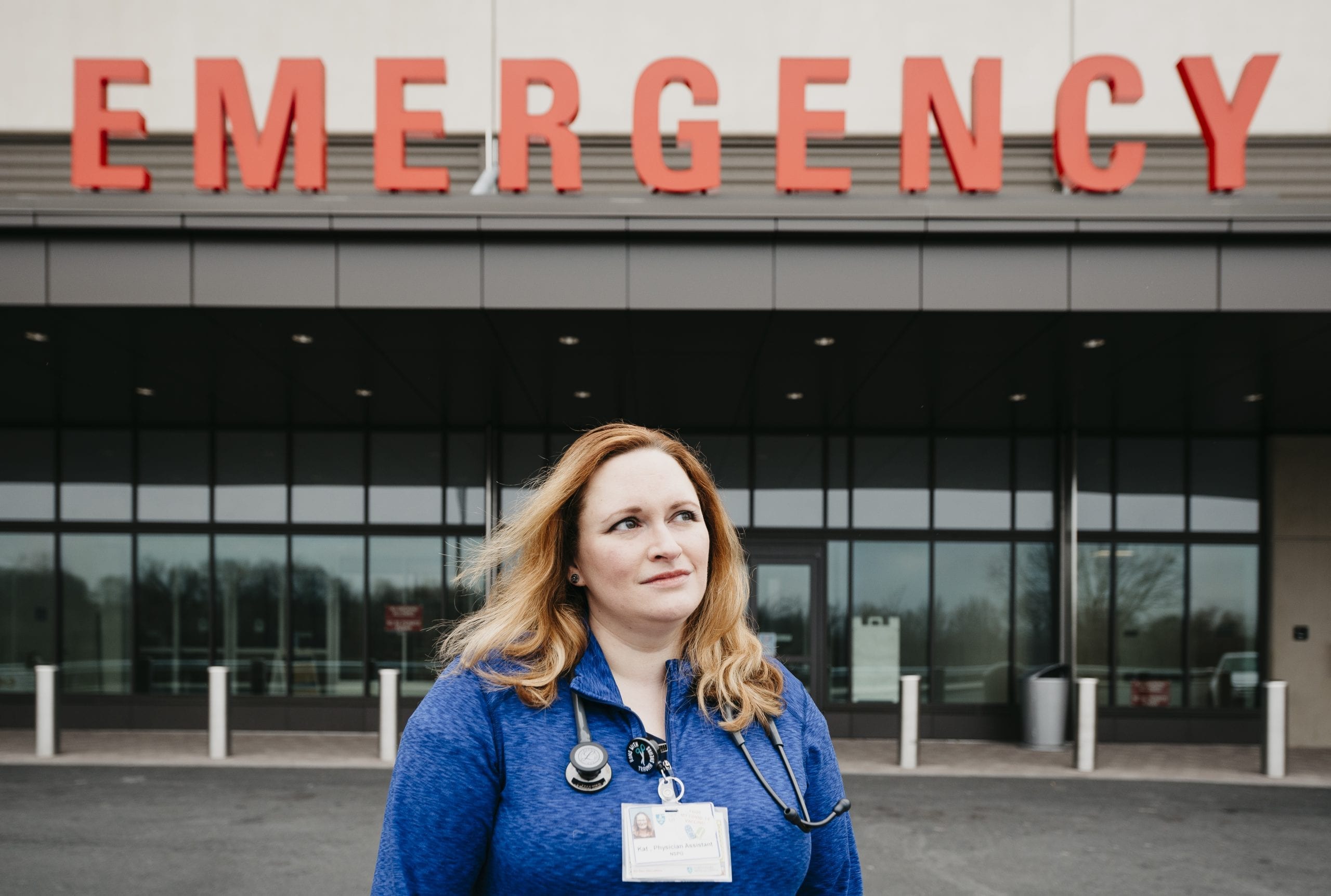When the COVID-19 pandemic began a year ago, front-line workers everywhere were facing uncharted territory. Medical personnel around the globe were forced to adjust to the rapidly evolving pandemic that was taking so many lives. The medical care workers at North Shore Medical Center (NSMC) are some of these “heroes” who have experienced the drastic effects of COVID-19.
Kat Warren, a Physician Assistant in the Emergency Department (ED) at NSMC, contracted COVID-19 in March, just a few weeks after she started working with coronavirus patients at the hospital.
Warren’s symptoms got so bad she was eventually hospitalized for five days at her place of work, saying that it was weird and she felt guilty.
“I have all of my colleagues here dealing with this horribleness and I’m not able to help,” she said.
She noted that before she left for the hospital, she had the difficult and awkward discussion with her husband of her not returning home or having to be intubated, given what she had already witnessed COVID-19 do to some of her patients. She spent five days in the hospital, not having to be intubated, but said she vaguely remembers this experience since she was so out of it.
When she returned to work a couple of months later, struggling with post-COVID symptoms, including difficulty breathing and extreme exhaustion, she said her days were devastating.
“I told my husband that I don’t think any of us here (at NSMC) have gone a day, in the last 365 days, without a COVID death,” she said.
Warren described working with COVID-19 as a “slow motion trauma,” since COVID-19 has been never-ending.
She described the last year working with COVID-19 as a struggle, noting that when she would go home and have time to reflect, the anxiety and emotions would kick in.
John Powers, a physical therapist at NSMC, said the perception of COVID-19 was big and scary like a monster under the bed, but the reality of it was normal people going through an extreme struggle, which he said made it difficult.
“I came to NSMC when the AIDS epidemic came through. This was nothing like that,” he said.
Powers said when the pandemic hit NSMC, it was very scary, leaving him and his coworkers trying to figure out what to do and how to adapt to this new virus, given that data and guidelines were changing everyday.
“It was a lot of fear, that turned into tears, that turned into laughter, that ultimately turned into strength,” he said. “Here we are a year later, and it’s kind of like “OK, we got this.”
He explained a particular experience where one of his patient’s had COVID-19 as well as a stroke.
“No visitors were allowed and everyone working was all covered up,” he said. “My job is a lot of face-to-face, and now they can’t even see my face.”
He talked about how he helped this patient FaceTime her family, saying that FaceTime has been a lifeline to so many patients.
“It still gives me chills to see the reaction of the patients and the families to see their loved one on FaceTime,” Powers explained.
He said about six family members joined this FaceTime call to see their mother and grandmother, whom they had not seen move in more than a week.
“It was moving, and sad, but also hopeful because she was able to sit up and see her family, even if it was only on a phone.”
“I shed some tears, it was such a positive thing,” Powers said. “I left the room, thinking how sad and gloomy it has been, and this gave me hope. Something good came out of this and it made me think that maybe we could get through this.”
He praised his coworkers and patients’ strength through this pandemic.
“I gained a whole new love and respect for everybody that I work with,” Powers said. “There was a lot of support. Everybody had each other’s back.”
Amanda Moses also found some light during the dark times that accompanied COVID-19. Moses is a patient experience specialist at NSMC, where she recently worked with a patient in the intensive care unit (ICU) who is hard of hearing.
The patient’s wife told Moses that he couldn’t really understand what was happening because everyone working with him was wearing a mask, so he could not see their mouths to read their lips.
In an attempt to help this patient, Moses retrieved a supply of clear-window surgical masks for the patient’s care team. When Moses and the rest of the team entered the patient’s room with the clear-window masks on, the patient was so happy and began to cry.
According to Moses, the patient said: “Oh wow, I can see your lips! Oh, that is so amazing!”
“It was such a simple thing for him to be able to better understand the communication from his care team about his medical care,” Moses said. “He had a critical event, so it was really scary for him.”
Moses noted that this was such a happy moment that was much needed.
“It was a really difficult time to be a healthcare worker during COVID-19,” she said. “I think that this particular story with the clear masks really resonated with people because it was such a bright spot in such a dark time.”
Warren, Powers and Moses said that working on the front lines of the pandemic was extremely scary and difficult, urging people to continue to be safe and follow guidelines to protect themselves and their loved ones.
Allysha Dunnigan can be reached at [email protected]

